Arithmetic, Modular Forms And p-Adic Variation
1. Plan
Lecture 1: Arithmetic and Modular forms. General introduction and motivation to the mini course. We introduce Modular forms: definitions, examples, L-functions. We explain interesting arithmetic problems related with modular forms.
Lecture 2: Modular forms and algebraic geometry. Modular curves, modular sheaves, Modular forms as section of sheaves.
Lecture 3: p-adic study of the Riemann zeta function. We consider our first example of a p-adic family and the connection with the construction of the p-adic analogue of the Riemann zeta function. The goal of this lecture is to give a motivation to the introduction of p-adic families of modular forms.
Alternative lecture 3: Elements of rigid geometry. The idea is to introduce some basic definitions and facts about rigid geometry. This language will be strongly used in the rest of these lectures.
Lecture 4: Families of Banach spaces. We explain the spectral theory for certain operators on Banach A-modules. For us the basic example of the algebra A will be the rigid functions on the natural rigid variety of “p-adic weights of modular forms”.
Lecture 5: p-adic families of modular forms. Following [2] we construct p-adic families of modular forms.
2. Original goal and technical explanations
I would like to explain the goals and the possibilities of the plan above. The original motivation of this mini course was to explain the new ideas of the preprint [1]. In that work the authors consider three p-adic families of modular forms and construct certains p-adic analytic functions which are related to certain values of some L-series attached to triples of modular forms. The main task of Andreatta-Iovita’s approach is to construct p-adic families of modular and de Rham sheaves. Moreover, we need to p-adically interpolate certain connections on these de Rham sheaves. These geometric constructions were the original motivation to this serie of lectures.
These constructions are technicals and require a considered background regarding the duration of the mini course and the audience expected. For that reason I decided to cover some more classical background which is crucial in the direction of the original goal. Moreover, in private discutions I will explain the Andreatta- Iovita’s new ideas to the interested people. More precisely, the new goal of this mini-course is to explain the arithmetic importance and construction of p-adic families of finite slope modular forms.
I consider the new goal could make the course not that technical. The goal of lectures 1 and 2 is to introduce modular forms and describe them in geometric terms. A good reference is [3]. Lecture 3 can be considered as a motivation to the p-adic variation of arithmetic objects. I also propose “alternative lecture 3” instead of “lecture 3”, more technical but useful for the rest. In lectures 4 and 5 I will explain the construction of p-adic families of modular forms carried out by R. Colemam. In fact, the main ideas of R. Coleman are crucial in [1].
References:
[1] F. Andreatta, A. Iovita, – Triple product p-adic L-functions associated to finite slope p-adic families of modular forms, preprint 2017.
[2] Coleman, R. Coleman, – P-adic Banach spaces and families of modular forms, Invent. Math. 127, 417-479 (1997).
[3] F. Diamond, J. Shurman, – A first course in Modular forms, Grad. Texts Math. 228, (2005) Springer-Verlag.


